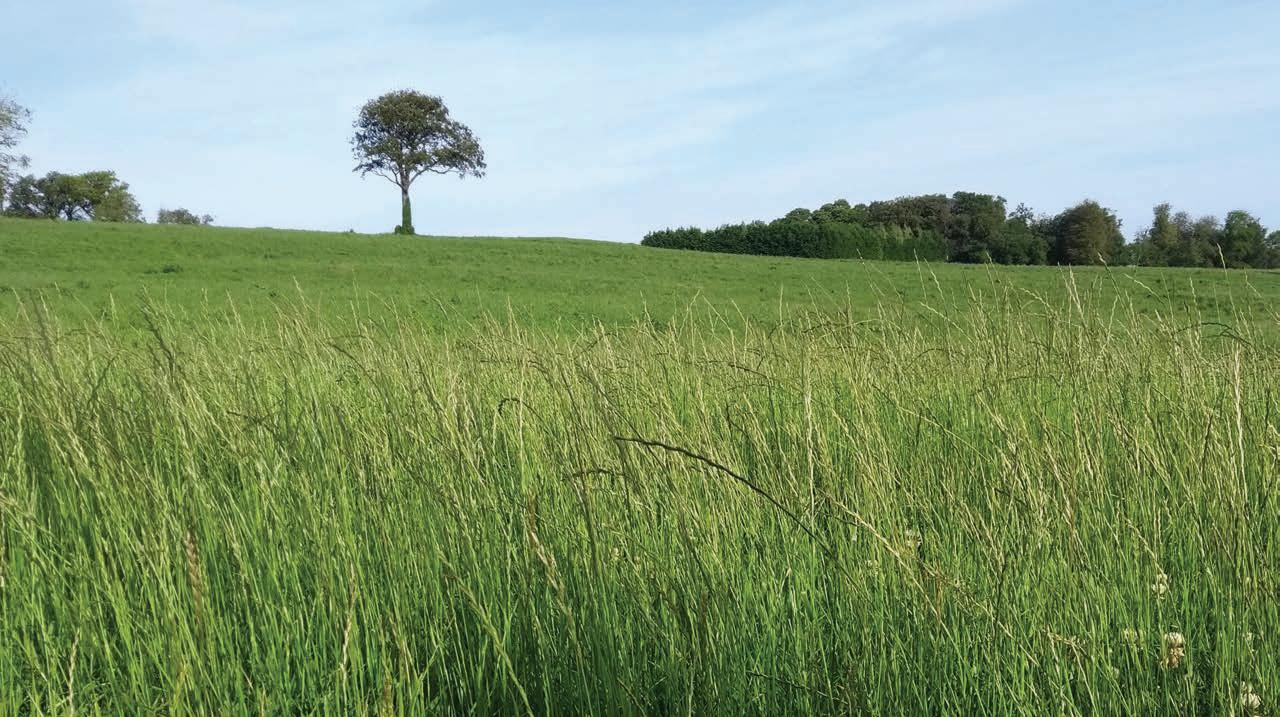LANDSCAPE / 09
FARMWALKS
After a visit to the Inishowen peninsula, Féidhlim Harty is hopeful for the integration of sustainable farming practices and the protection of watercourses
L
ast month, I visited the beautiful Inishowen peninsula to walk some farms. I was there at the invitation of the Inishowen Rivers Trust, a young and dynamic organisation, tasked with exploring opportunities to protect and improve the water quality of the rivers and streams in the area. This northerly peninsula is a broad spread of hilly ground sandwiched between Lough Foyle and Lough Swilly. Small rivers and streams flow from the centre to the sea on all sides, with the usual pressures of effluent from septic tanks and farming affecting the quality of the water. I won't even begin to reflect on the potential impacts on water quality if gold mining in the peninsula is permitted. On the day of the visit our task was down to earth, to walk those farms that had watercourses on the land and talk with the farmers and farm walk participants. We explored ways to improve water quality and habitat value using a variety of measures, many of
30
which had been implemented already in recent works. One farmer was just beginning to explore the potential options on her farm, whereas two others had already excavated new ponds to act as silt traps and accommodate wildlife. On one of the farms extra in-channel silt traps and generous belts of upland tree-planting had already been introduced. There were also areas of steep land that had been fenced off to protect vulnerable sloping woodland from erosion by overgrazing. As a guest to the area, I was excited and encouraged to see the work being done here, both by the Rivers Trust itself and the Inishowen Uplands EIP (European Innovation Partnership), which facilitated the recent pond and tree planting works. All across the country similar solutions are urgently needed. Small streams and farm drains are the headwaters of our river systems. The degree of pollution in these small headwaters sets the level of pollution in our nation's watercourses which suffer ill health and
HORTICULTURECONNECTED / www.horticultureconnected.ie / Summer 2021
have poor quality as a result. The corollary is also true. If we can keep all the small drains and streams clean, clear and vibrant, our river water quality will have a chance to recover and revitalise. That's no small task. If your kitchen tap, toilet or milking parlour wash-water eventually ends up being the spring that feeds your local headwater, then treating the grey water, sewage or farm run-off is crucial if we want pristine rivers and groundwater. But it's doable. It's readily achievable. Just as our collective lack of focus on this area up to now has led to a steady reduction in water quality, so too a collective focus can reverse this trend. So, if I had a wish-list of measures to roll out around the country, what would it include? Well, all of the measures I saw on my visit to these farms in Inishowen: Farm-scale buffer zones along drain and stream edges; silt traps and settlement ponds; in-channel wetland planting with check-dams to slow the flow and create mini pools in each drain section; upland tree-planting and strategic fencing for protection of vulnerable ground from livestock.




























